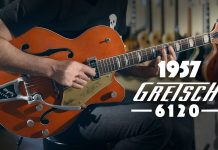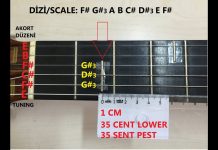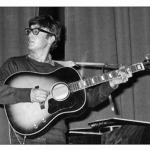After the article the history of electric guitar, this article comments different amplification methods for plucked string instruments such as the guitar.
As a start we could say that one of the first methods to artificially amplify the sound of an instrument was using a microphone in front of him. This method is still used today, especially to amplify classical or flamenco guitars. Furthermore, this method is best reflects the pitch or timbre of an acoustic instrument with sound box.

But this amplification method has several problems, as we commented in the section of history. Trying to amplify the sound of a guitar using a microphone does not work when playing it in groups because the microphone amplifies the guitar and also the other band instruments.
The sound waves produced by the instruments are variations of air pressure and the microphone capsules are sensitive to variations in air pressure, moving back and forth when is hit by pressure waves. For this reason, the microphone may be affected by sound waves coming from other instruments in the same room.
One of the first methods to artificially amplify the sound of an instrument was using a microphone in front of him.
Due to the problems of amplification using microphones, new methods were implemented to amplify the volume of the guitar. Among these other amplification methods we find amplification piezoelectric crystals. This is the amplification method that converts the mechanical vibrations of the top, not air, into electrical signals ready to be amplified.
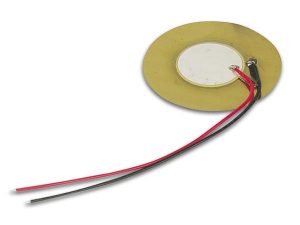
In these piezoelectric crystals the vibrations of the top are collected by a sort of diaphragms that are fixed to the top of the guitar to collect the vibrations of the wood. Usually it consists of one or more crystals. That is why depending on the model they will be placed on the top, in the interior of it, or under the saddle of the bridge. In any case, the signal obtained needs a preamplifier.
And finally, the next amplification method described is the amplification method used by all electric guitars.
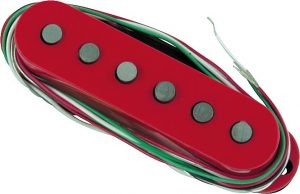
An electromagnetic pickup basically consists of a magnet with a copper wire, in a coil. When the string vibrates near the coil of the pickup, electricity is induced and connected to an amplifier it is transformed into sound waves.
In this type of amplification we do not find the coupling problems of the microphones because the electromagnetic pickups recognize the magnetic variations and not of the air pressure.
The sound that will be obtained with each pickup depends on the parts that compose it. The electromagnetic pickup is usually a ceramic magnet because they are cheaper and have more treble response. The magnet of the pickup has great repercussion in the sound that will provide it. Depending on the proportions of the magnet and its material we will get a sound or another.
Piezoelectric systems converts the mechanical vibrations of the top, not air, into electrical signals ready to be amplified.
The sound of the pickup will also be affected by the type of winding it has. It depends on the number of turns of wire around the magnet and the proximity of it, for example, the more turns and nearest, the higher output power. The coil wiring is copper and is placed insulated to prevent short circuits. Depending on the thickness of the copper wire and the number of turns you will get a resistance for the pickup or another.
Another aspect important is the place of the pickups into the body of the instrument. The pickups near the bridge reduce the low tones and the pickups near the neck provide a fuller sound and less treble. These are called rhythm pickups and work best when playing rhythms or chords, and the closest to the bridge ones are better to playing individual notes, hence their name of solo pickups.
Finally, and to finish with this section of amplification, we will talk about a problem we can find with the electric guitar pickups. As we have seen, amplifying a traditional guitar with a microphone also amplified the rest of the sound waves produced by the other instruments. When amplifying electric guitars with an electromagnetic pickups happens something similar. As we saw, the electromagnetic pickups do not amplify sound waves, it takes the magnetic disturbances produced in the pickup coil. In this case, we may also encounter undesirable disturbances because the coil can be induced by external agents such as those produced by fluorescent or computers.
An electromagnetic pickup basically consists of a magnet with a copper wire, in a coil.
As a solution to this problem, the Gibson implemented some pickups called Humbucker which could cancel the external influences. These pickups consist of two coils, instead of one, and are connected in series, so that the current passes first by one and then by the other, but out of phase, and combined cancels the external disturbances.



